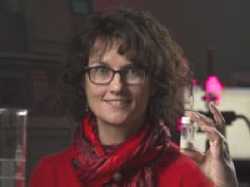9/28/2015 Sensory mapping methodology detects the unexpected effect of emulsifiers in emulsions : Jennifer Donahue Ph.D Croda International PLC.
Abstract: Consumer demand for a pleasurable sensory experience extends to everything we touch, including our cosmetic emulsions. In personal care, the feel of a product provides important clues to consumers about the product’s function and purpose. If feel is everything, how can you quickly and easily achieve your desired aesthetics?Sensi cationTM, the science behind sensory innovationTM, is an easy-to-use system that allows formulators and marketers to navigate the complex landscape of sensory descriptions in a clear, de ned way. Utilizing the quantitative and objective Spectrum Descriptive Analysis (Sensory Spectrum Inc, New Providence, NJ) method as well as Principle Component Analysis, Croda’s scientists have found that the fundamental sensory signature of an emulsion is de ned, and to a previously unexpected level, by the choice of the emulsi er (or emulsion stabilizer system).Watch Video


